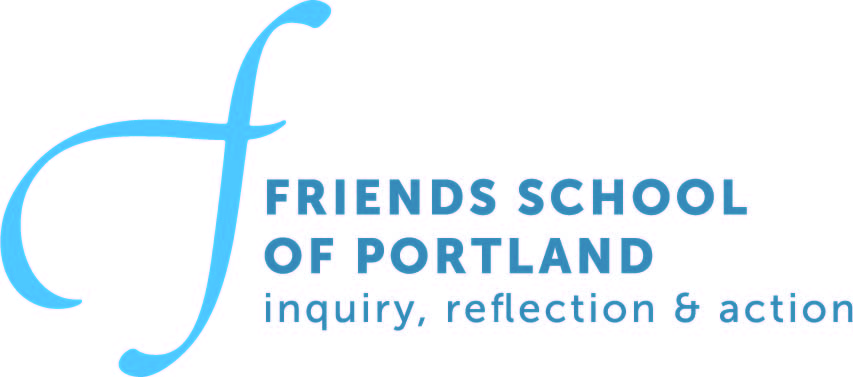photo credit: Kelsey Kobik
Once our middle school hit its full capacity for the 2022-23 school year, Nadja Tiktinksy joined us in our newly created position of middle school assistant teacher. As middle school assistant teacher, Nadja spends one full day with each classroom teacher per week, helps students one-on-one with their work, teaches a range of creative electives, and steps in as primary coverage whenever a middle school teacher is out. As often happens at Friends School, there was some cross-pollination which led to her sharing her expertise and passion beyond the middle school hallway. Sara Primo sat down with Nadja Tiktinsky to talk about a topic they both share a love for: taking picture books and young people as readers seriously!
Tell me about your passion for picture books. When did it start? What about picture books excites you?
When I did my MFA in children’s literature, I had the opportunity to deep-dive into the mechanics of picture books. Picture books, in my opinion, are the most elevated art form. There is just so much opportunity to create meaning - using page breaks, blank space, end papers, gutter, text size, spot art, etc. In the best picture books, words and illustrations each do half the storytelling, sometimes complementing and sometimes countering each other. Preschoolers talk a lot about not bumping each other’s words (interrupting), and that’s important in a picture book, too - the words and illustrations can’t bump into each other’s storytelling work, creating redundancies. They have to leave room for each other.
Q. What have you been doing with preschoolers specifically?
Ashley and I had a conversation earlier this year about a theory book I’d recently read, Reading Picture Books With Children by Megan Dowd Lambert. That’s opposed to “to” children. Lambert’s research on her “Whole Book Approach” shows that children understand, retain, and analyze on a higher level when they interact with books instead of just listening to them. She advocates giving children the technical language necessary to describe what’s happening in a book, and encouraging them to interrupt and comment during reading. Ashley invited me to come to preschool once a week to introduce the Whole Book Approach to her class.
When I read with the preschool, I say, “We’re going to read this book together. I’ll read the words to you, and you’ll read the pictures to me.” Then I’ll explain a technical term that I think will be helpful. For example, before we read Hot Dog by Doug Salati, I introduced the term “gutter”. The gutter is the centerline of a book, where two open pages meet. It’s often used to separate and group images. Hot Dog is about a dog overheating on a summer day, and the kids noticed that when the dog was upset, the gutter separated it from its owner. When the owner takes her dog to the beach, they’re shown on the same side of the gutter. The kids’ technical knowledge enhanced their ability to track the emotional story through the images. As I read, I stop on every page and give time for responses. Sometimes I ask, “what do you notice about this page?” or remind the kids of a technical term, i.e. “what do you notice about blank space here?” but I try not to prompt more than that.
How have you analyzed picture books with middle schoolers?... and how has it gone?
What’s interesting is that what I’ve done with middle schoolers and preschoolers is exactly the same. However, preschoolers, who look at picture books all the time, are primed to do visual analytical work. Just being invited gets them there. Middle schoolers have to be prompted more. With older kids, I’ve also picked books that are more emotionally or topically challenging, on par with what they’re learning in Humanities.
Q. What are you hoping this leaves students with? How do you see this connecting with other work that goes on at FSP?
What the preschoolers are doing is high-level art and story analysis. They are noticing and discussing symbolism, foreshadowing, theme, foils, and character development in the books we read. This is foundational work that they will build upon for the rest of their academic lives. At FSP, we think a lot about capability, and I see the preschoolers feeling and acting capable as they read pictures. The beginning stages of reading and writing letters and words are really, really hard - it is a lot of work. I hope that as these kids begin that difficult work, they are buoyed by the capability with pictures they have built this year.

